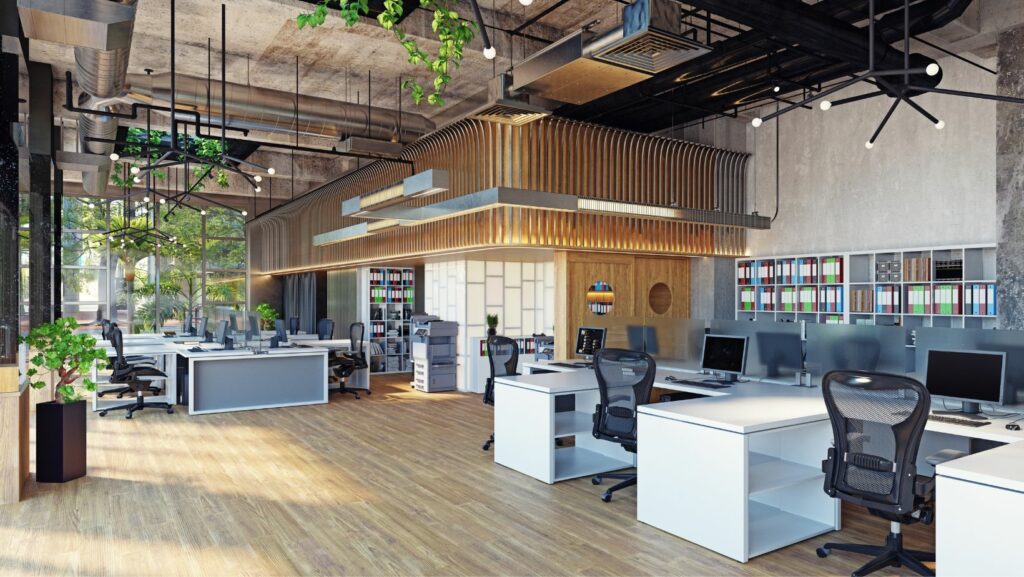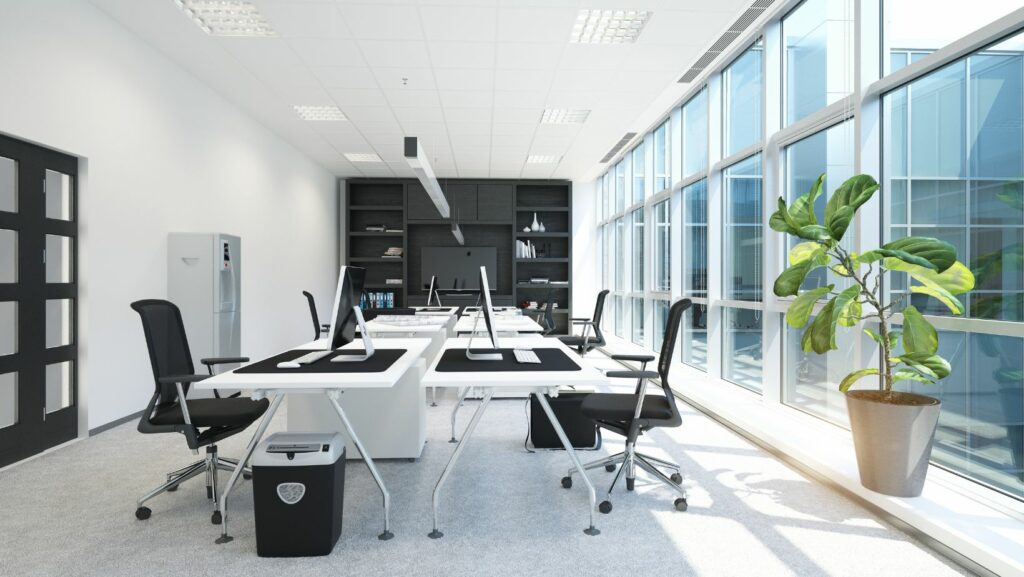In the realm of business, first impressions matter. This is particularly true for corporate office interiors. They’re not just about aesthetics; they’re a reflection of a company’s identity, culture, and values. A well-designed office can boost productivity, foster creativity, and improve employee satisfaction.
Corporate Office Interior Design

Corporate office interior design plays a pivotal role in forming a company’s image. It serves as the visage of a company’s culture and values, influencing not only perceptions but also productivity. Design matters when it comes to workspaces. An expertly planned layout boosts productivity by up to 20%. Right placement of office elements like desks, conference rooms, etc., it’s proven, can foster creativity and motivation. For instance, vibrant colors and open spaces often inspire creativity.
Another major aspect of interior design is employee satisfaction. In a survey by Gensler, the majority of employees—up to 90%—reported that their office environment directly impacts their job satisfaction level. This survey illustrates that a well-designed workspace is instrumental in not only attracting but also retaining efficient employees.
Office interior design isn’t just about aesthetics, it involves strategic space planning. The ideal office layout optimizes space utilization, ensuring efficient operation while fostering an atmosphere conducive for collaboration and innovation.
Lastly, color psychology forms an integral part of corporate office interior design. The use of specific colors in an office space can stimulate certain moods or behaviors. For instance, blue is often associated with increased concentration, while green is said to encourage relaxation. Therefore, the strategic use of color can further enhance the overall productivity and satisfaction in a workspace.
Key Elements of Corporate Office Interior Design

Focusing on functionality, the paramount principle of corporate office interior design remains the optimization of workspace. Prioritizing task-specific areas, like meeting rooms, creative brainstorming zones, or private retreats for focused work, enhances efficiency.
Emphasizing better lighting, another key element, holds equal importance as natural light boosts mood and productivity. Incorporating more windows, skylights, or glass partitions can maximise light entry.
Implementing brand identity into the design, companies can showcase their ethos, for instance, an eco-friendly company may opt for green spaces and sustainable materials.
Comfort also represents a crucial factor in an office design. Ergonomic furniture, for example, chairs providing lumbar support or standing desks, increases worker comfort and reduces health risks.
Lastly, incorporating scope for flexibility and adaptability within the design anticipates future growth and change. This ensures the office space remains functional even as the company evolves, securing a return on investment.
Trends in Corporate Office Interior Design

Discussing the newest trends, office interior design shows a significant shift towards creating a holistic environment. For instance, biophilic design has garnered popularity, integrating elements from nature into the office setup – plants, natural lighting, and organic materials improve employees’ mental health. The shift towards flexible workspaces emerges prominently, accommodating a blend of remote and in-office work. Here we observe modular furniture and reconfigurable spaces, increasing adaptability while ensuring space optimization. For example, companies hire spatial designers to create convertible meeting rooms, providing flexibility and making efficient use of space. Adopting a blend of private, semi-private, and open spaces capitalizes on the merits of each, catering to different needs. Technological integration constitutes another essential trend, with smart offices employing interactive boards, video conferencing equipment, or automated systems enhancing workflow efficiency. The use of color psychology perpetuates – spaces are planned in a variety of hues, stimulating different moods, enhancing productivity and creativity.
Budgeting for Corporate Office Redesign
It’s clear that corporate office interior design isn’t just about aesthetics. It’s a strategic tool that reflects a company’s identity and values while boosting productivity and employee satisfaction. Strategic space planning and color psychology can significantly enhance workspace functionality and employee well-being. By embracing current trends like holistic environments, biophilic design, flexible workspaces, and tech integration, companies can create adaptable spaces that cater to various work needs. These elements not only improve mental health but also enhance workflow efficiency. So, when budgeting for a corporate office redesign, it’s essential to consider these factors.



